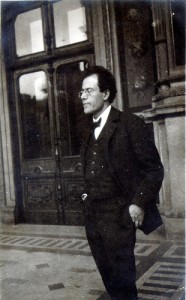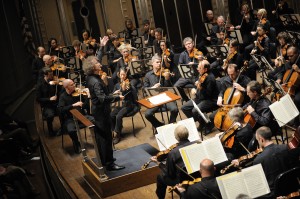
Mahler’s sublime, monumental Third
The Cleveland Orchestra opens its annual Miami residency this Friday and Saturday with the Third Symphony of Gustav Mahler, which at 100 minutes long and six movements is his longest, most sprawling orchestral work.
In doing so, the Cleveland makes Miami more of a Mahler city, joining Miami Beach’s annual presentations of Mahler symphonies in recent years, as the New World Symphony under Michael Tilson Thomas takes a multi-year retrospective look at each of these works (in 2013, the New World presents the Fourth on April 27 and 28 at the New World Center).
But the Third, written in 1895 and 1896, is one of the hardest to bring off, with its huge, dramatic opening movement followed by five others of very different character – a gentle minuet, a dark scherzo, a mysterious alto song followed by a sprightly choral march, and for the final movement, a long, extremely deliberate slow movement of great serenity and intense passion.
Trying to navigate all those successfully, and keep an audience with you, is an immense challenge for conductor and ensemble, but if it’s done well, it’s an extraordinary journey. Mahler divided the symphony into two parts, with the long first movement in the first and the five others in the second, and originally supplied titles to each of them.
He took the titles off before the first performance, but frankly, I like them, and I think while the programmatic impulse is frowned on today, it helps to know that the introduction to the first movement was called Pan awakes, and the rest of the movement Summer marches in. The others movements are titled What the flowers in the meadow tell me; What the animals in the forest tell me; What Man tells me; What the angels tell me; and What Love tells me.
These help listeners hear the symphony as a huge pantheistic hymn to all creation, a piece that joys in the splendid variety of earthly life, that pays homage to man’s strivings and his spiritual leanings, and that sees in the end the redemptive power of love. It seems to me the symphony is easier to follow that way, and for a listener unfamiliar with Mahler’s aesthetic, it helps it sound less random.
The text for the fourth movement song is taken from the Also Sprach Zarathustra of Friedrich Nietzsche, then a hugely popular philosopher. He’s less so today, perhaps, but he had a huge influence on the young intellectuals of Mahler’s day, and while Zarathustra is recondite and difficult to parse, one can see how its message of total self-realization, of man as his own god, appealed so strongly to the ambitious soul of a young artist.
And the fifth movement, taken from the popular folk collection Des Knaben Wunderhorn (The Youth’s Magic Horn), is a Christian message in folk style (Mahler was Jewish, but converted to Catholicism for professional advancement in anti-Semitic Vienna): The apostle Peter is redeemed from sin by giving himself to God, and dwells – as can the listener of the song – in a city of heavenly joy.
That’s a lot to take in for any symphonic concert, but it provides such a valuable window into the intellectual atmosphere of fin-de-siecle urban Europe, not only through its revelation about what the striving urban professional was reading, but also how the music he heard was changing. I think it helps to hear the music through this scrim, to try to hear it through the ears of this vanished but vital culture that still influences how culture in our own country is presented, and the place it assigns to art in general.
Then again, it’s also enormously exciting, always brilliant, immensely varied music, and the final 25-minute Adagio is writing of exceptional beauty and radiance (though not without powerful, tragic outbursts), and it’s uplifting, too: If this is what Love tells him, it tells him that it goes on and on, that it is the truest and most beautiful thing in our lives. It’s a wonderful message, and I don’t doubt that Mahler meant to convey it.
Franz Welser-Most and the Cleveland Orchestra. Photo by Roger Mastroianni
The Cleveland’s music director, Franz Welser-Möst, will lead the orchestra in this music by his fellow Austrian, joined by the Argentine-Slovenian mezzo-soprano Bernarda Fink, the Miami Children’s Chorus (under Timothy Sharp) and the women of the Frost Symphonic Chorale and Master Chorale of South Florida (under Karen Kennedy).
The 8 p.m. concerts at the Knight Concert Hall will be preceded by a chamber music concert for those who want to come early. The 7 p.m. concerts will feature violinist Eli Matthews and pianist Joela Jones in the Theme and Variations of Olivier Messaien, followed by the Clarinet Trio (Op. 11) of Beethoven, with clarinetist Robert Woolfrey, cellist Tanya Eli and pianist Carolyn Gadiel Warner.
Call 305-949-6722 for tickets or visit www.arshtcenter.org, or www.clevelandorchestramiami.com.
Recent Content
-
Artsarticle ·
-
Artsarticle ·
-
Artsarticle ·


